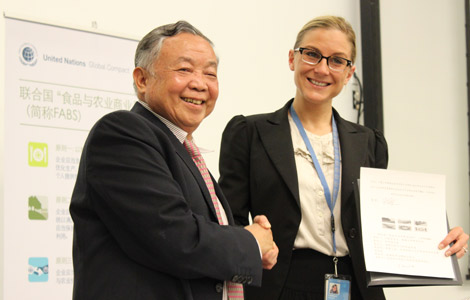US, China can share on climate: panel
Updated: 2014-06-06 22:42
By QIDONG ZHANG in San Francisco (China Daily USA)
|
||||||||
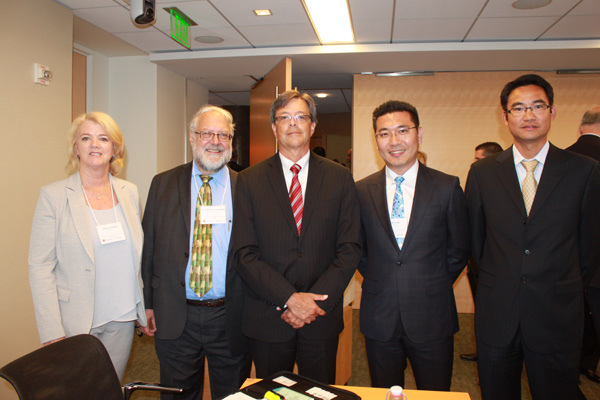 |
|
The California-China Cooperation on Climate Change roundtable discussion was held on June 5 in San Francisco with, from left: Annie Notthoff of Natural Resources Defense Council (NRDC); California Environmental Council chair Robert Weisenmiller; California EPA Secretary Matthew Rodriquez; Yuan Nan of the China Energy Conservation and Environmental Protection Group (CECEP); and Xu Mingchao of CECEP. Qidong Zhang / CHINA DAILY |
On June 5th, the China-US Energy Efficiency Alliance, the California Energy Commission, and the California Environmental Protection Agency join together for a roundtable discussion on a unique partnership between California and China that addresses climate change, air quality, and the role of clean energy and energy efficiency in reducing greenhouse gases and harmful air pollutants.
"Climate change is a global problem that has proved incredibly difficult to solve at an international level. By demonstrating the mutual commitment of California and China, two of the world’s largest economies, our collaboration can serve as a catalyst for other agreements and ultimately change policies in the United States and throughout the world," said Wade Crowfoot, Senior Advisor to California Governor Edmund G. Brown Jr.
According to the Pew Charitable Trust, China let the world in clean energy investments in 2013 with $54 billion, US was second with $36.7 billion.
Steve Westly, former California State Controller and managing partner of the Westly Group, said China installed 14GW of wind power generation and 12 GW of solar power generation last year, compared to 1GW of wind and 4.3 GW of solar in the US.
"China is the world’s largest producer of hydro-electric power. Coal power still accounts for 65% of all energy consumed in China. The Chinese government’s goal is to double wind power capacity by 2020—that is a model the rest of the world would be smart to follow," said Westly.
Robert Wu, Chairman of US-China Green Energy Council, said both US and China are facing extreme weather bringing serious disasters. On the other hand, however, there is an increasing distrust of each other and blaming on how to handle this world issue.
"Both countries should look at the big picture and grasp opportunities to collaborate as the world is facing the biggest challenge of global warming, degrading living environment. We are both largest polluters in the world, but we have to join hands to attack climate changeand meet the challenge. In the process we will learn to respect each other, trust each other, and form a win-win team to fight for the welfare of mankind," said Wu.
According to him, California State has mandated laws that by year 2020, 33% electricity should come from renewables. This policy has stimulated many Silicon Valley green energy innovations, where IT, mobile communication, cloud computing and big data analysis.
Richard Kramlich, Chairman and Co-founder of New Enterprise Associates (NEA), one of the largest venture capitalist firm that has invested in over $500 million in China, said the solutions to air pollution are straight forward and simple but they require government actions: quit coal, establish clear, strict air quality standards and introduce effective policy instruments to curb the rapid growth of the number of vehicles on the roads.
"There are many intermediate solutions for air pollution, but all of which require government to recognize the impact of air pollution on public health and the economy, and to take immediate action. The Chinese government has made tremendous effort at this point, and with joint effort from US and China’s high tech breakthroughs, it will improve but it just takes time. Electric cars should definitely be encouraged via incentive policies in China, and coal mines should be eventually eliminated," said Kramlich.
Kramlich numbers a few items on his top priority list: tightening controls for power plant emissions to reduce emissions, introducing cleaner fuel standards and switching to electric vehicles, restricting the construction of power plants and other energy-intensive industries near residential areas, improve urban planning to increase green spaces, and taking air quality into consideration when conducting environmental assessments for major projects; for example, flyovers and highways should be far away from residential areas.
Sean Randolph, President of Bay Area Council Economy Policy Institute, says California and the China share a unique opportunity in the fields of environmental protection, and clean and renewable energy.
"This dates in part to California’s experience since the 1960s, when dense smog blanketed the Los Angeles basin, impairing visibility and lowering air quality. Remedial measures since then have yielded dramatic improvements in regional air quality, with emission control policies now being implemented on a statewide basis. These measures have entailed additional costs to consumers, but are widely supported due to their measureable health and quality of life benefits," said Randolph.
According to him, California is also home to the highest concentration of cleantech companies in the United States, attracts the most clean tech investment, and is the largest market for and producer of clean energy technology in the United States. This dynamic private sector complements state level policies and has placed California at the forefront of renewable energy and energy efficiency technology innovation.
Matthew Rodriquez, who was appointed California Secretary for Environmental Protection by Governor Brown in 2011, oversees the activities of the California Air Resources Board, the Department of Toxic Substances Control, the Department of Pesticide Regulation, the Office of Environmental Health Hazard Assessment, and the State Water Resources Control Board. As a member of the Governor cabinet, he advises the Governor on environmental policy.
"Our agreements with China have led to productive, substantive exchanges across a range of areas, from energy efficiency to renewable energy to emissions trading. California has experience and success in these areas, and our China partners are interested in learning from us. At the same time, we know we have a great deal to learn from them," said Rodriquez.
kellyzhang@chinadailyusa.com

 National security adviser defends US leadership role
National security adviser defends US leadership role
 Nonstop route links Chengdu and San Francisco
Nonstop route links Chengdu and San Francisco
 Expanding routes make Hainan Airlines order more planes
Expanding routes make Hainan Airlines order more planes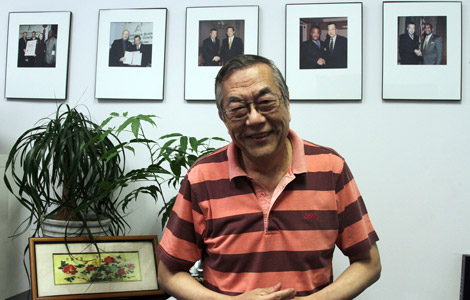
 Asian-American business professionals to be honored
Asian-American business professionals to be honored
 Air China makes maiden direct flight to Washington
Air China makes maiden direct flight to Washington
 2014 Electronic Entertainment Expo kicks off in LA
2014 Electronic Entertainment Expo kicks off in LA
 China, US should rebalance economic strategies: expert
China, US should rebalance economic strategies: expert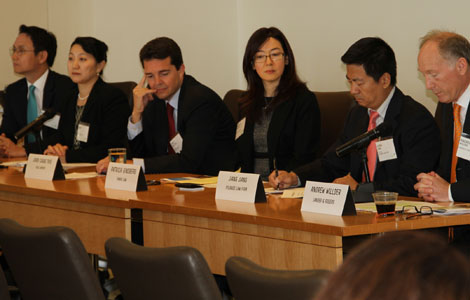
 China's reforms offer opportunities, challenges: panel
China's reforms offer opportunities, challenges: panel
Most Viewed
Editor's Picks

|

|

|

|
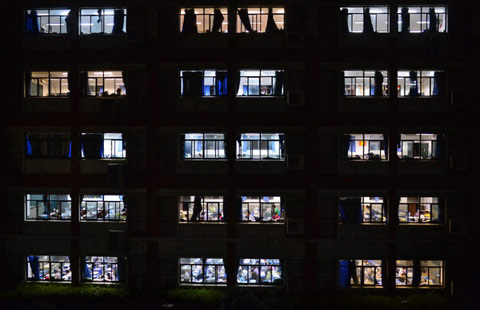
|

|
Today's Top News
US sends wrong message on China
US, China airline market heating up
Asian Americans concerned about bill to change NYC specialized school admissions
Sino-US ties reach new plane as flights expand
US clearly in the wrong over 'human rights'
Opinion: US adrift on China
China, US ink deals on energy efficiency
Chinatown leaders, NYC officials to be honored
US Weekly

|

|
